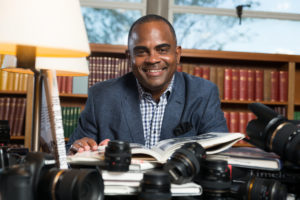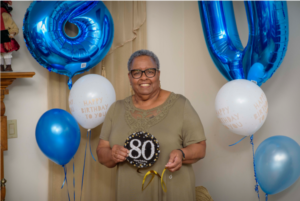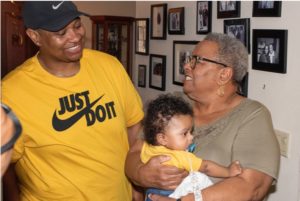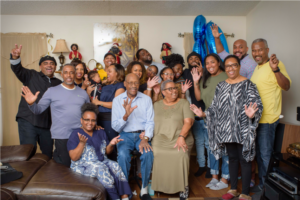
The Power of Teaching is in Your Hand: The Phone as a Revolutionary Pedagogical Device
I learned something this holiday season—my first holiday season as a grandfather. My family traveled from Atlanta, Georgia to Orlando, Florida to surprise my mother, Mrs. Earlene Watkins, on her 80th birthday. The surprise is summed up in this moment.

My mother didn’t know that that I was coming with my wife. But, we weren’t the big surprise. The big surprise was the new addition to our family. Her new, four-month old, great-grandson, Princeton Josiah Smith. My daughter, Nicole Smith, and her husband, Walter Smith, conspired with us to make this day possible!

My daughter Nastasia Watkins and I both videotaped this historic moment. I shot with two cameras: I walked in using my Canon G7 Mark II, and then I shot with my Canon EOS C100. These two cameras are what I am most comfortable with. I had to bring them in large camera bags, set them up, and prepare to shoot. In contrast, my thirty-two-year old daughter, Nastasia Watkins, shot her video with the camera she lives with: her iPhone. She not only shot this video with her phone, but she also edited the video on her phone. She posted her video within minutes. I took my video back to the hotel, edited it on my laptop in Final Cut X, and posted my video on the next day!

What did I learn? Nastasia Watkins is no teenager. My daughter is a partner in her own law firm. She and her peers are completely comfortable making memories with what is in their hands. As I watched her shoot video and take pictures over the holidays, it was clear that she was always ready to shoot. On the other hand, it was more work for me. It didn’t come naturally. I didn’t use my phone. I had to go get my camera, get ready, shoot, and then put the camera down. My daughter never put her camera down. It was no challenge for her to be engaged in the moment and shoot simultaneously. I was wowed by her ability to be fully present and to capture the moment. She taught me how her peers and those coming up behind her are processing, capturing, and seeing their world. They see the world with phone in hand. Their phone is not used to make phone calls, but as a way to see, engage, make sense of, understand, and frame their world. For we teachers, these are our students. They see their world through a screen the size of their phones. If we are to understand how to engage them, we must see what they see, how they see, and how they learn to make sense of that which they engage.
How do we do this? We must pick our phones up and start to use them as they use them. I have to put my big, expensive cameras down. I am recommitting myself to using my iPhone X for the reason I say I bought it: for the camera. When you see commercials about the latest phone, they never advertise the phone’s ability to make phone calls. They sell the phone as a camera. It was the commercial that sold me, and after this holiday season I have recommitted to using the most powerful pedagogical tool I have with me all the time and that is the camera on my phone.
When we use the phone as a camera and editing device, we will begin to engage and make sense of the world our students live in. This will, in turn, inform our teaching and learning. We will see the phone as a teaching and learning device and not as a distraction from our traditional teaching moments. When we see the tool in our hand as a revolutionary pedagogical device, it will change how we use that which we have in our hand.

Well, I know you want to see the two videos . . . here you go!
Video by Nastasia Watkins
https://vimeo.com/382453975
Video by Ralph Watkins
https://vimeo.com/382456567
Photo credit: Victor Watkins
Leave a Reply